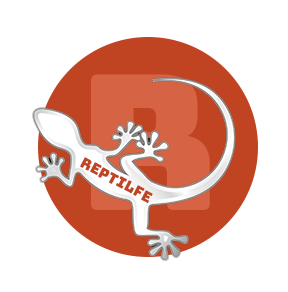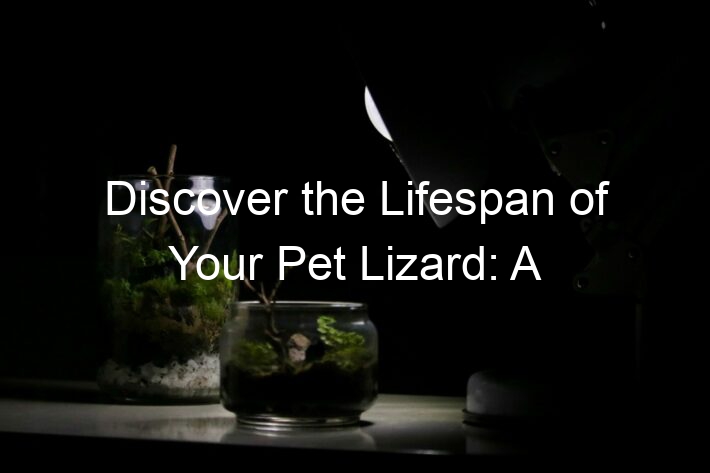Introduction to Reptile Gardening
Reptile gardening is an exciting and rewarding hobby that combines the love for reptiles with the passion for gardening. This unique concept allows you to create a naturalistic habitat for your reptiles while also enjoying the beauty and tranquility of a garden. Let’s delve into what reptile gardening entails and why it’s important to create a naturalistic habitat for these fascinating creatures.
-
- Understanding the Concept of Reptile Gardening
Reptile gardening, also known as herpetoculture, involves creating an outdoor enclosure that mimics the natural habitat of reptiles. This isn’t just about placing a few plants around a reptile cage. It’s about designing a living ecosystem that provides the right conditions for reptiles to thrive. This includes the right temperature, humidity, light, and food sources. It’s a careful blend of art, science, and a deep understanding of reptile behavior and needs.
-
- The Importance of Creating a Naturalistic Habitat for Reptiles
Creating a naturalistic habitat for reptiles is more than just aesthetics. It’s about providing an environment that promotes the health and well-being of your reptiles. In a naturalistic habitat, reptiles can engage in their natural behaviors such as basking, hunting, and hiding. This not only reduces stress but also promotes physical and mental health. Studies have shown that reptiles in naturalistic habitats exhibit more natural behaviors and have fewer health problems compared to those in sterile environments.
Reptile gardening is a journey of discovery and learning. It’s about understanding the intricate balance of nature and applying it to create a thriving habitat for your reptiles. It’s a rewarding hobby that brings you closer to nature and allows you to contribute to the conservation of these amazing creatures.
Benefits of Outdoor Enclosures for Reptiles
Outdoor enclosures for reptiles offer a myriad of benefits. These benefits not only improve the health and wellbeing of your reptilian friends but also enhance the visual appeal of your garden. Let’s delve into these benefits:
-
- Health benefits for reptiles
Reptiles, like all living creatures, thrive in their natural habitats. Outdoor enclosures mimic these environments, providing reptiles with the necessary elements for a healthy life. Exposure to natural sunlight, for instance, helps reptiles synthesize vitamin D3, essential for calcium absorption and bone health. Additionally, the varying temperatures and humidity levels in outdoor enclosures can help regulate their metabolic processes, leading to improved digestion and overall health.
-
- Enrichment opportunities
Outdoor enclosures offer a wealth of enrichment opportunities for reptiles. They can explore, climb, burrow, and bask, engaging in behaviors that are innate to them. This kind of environmental stimulation can significantly enhance their mental health, reducing stress and promoting natural behaviors. It also provides them with exercise, which is vital for maintaining a healthy weight and preventing obesity-related health issues.
-
- Visual appeal for the garden
Aside from the benefits to the reptiles themselves, outdoor enclosures can also be a visually appealing addition to your garden. With careful planning and design, these enclosures can blend seamlessly into your garden landscape, adding a unique and interesting element. They can be designed with a variety of plants, rocks, and water features, creating a mini ecosystem that is not only beneficial for your reptiles but also pleasing to the eye.
In conclusion, outdoor enclosures for reptiles offer a win-win situation. They provide a healthy and stimulating environment for your reptiles while enhancing the aesthetics of your garden. So, if you’re considering creating a habitat for your reptilian friends, an outdoor enclosure is certainly worth considering.
Creating Reptile Habitats: Key Considerations
When it comes to creating a habitat for your reptile, there are several key factors to consider. These include understanding the needs of your reptile, choosing the right location in your garden, and ensuring safety and security. Let’s delve into these considerations in more detail.
- Understanding the Needs of Your Reptile
Every reptile species has unique needs. For instance, some reptiles, like the Bearded Dragon, thrive in warm, dry environments, while others, like the Red-Eared Slider Turtle, require access to water. It’s essential to research your reptile’s natural habitat and try to replicate it as closely as possible. This includes considering factors like temperature, humidity, lighting, and the type of vegetation they prefer.
- Choosing the Right Location in Your Garden
The location of your reptile’s habitat in your garden can greatly impact their health and happiness. The area should receive a good balance of sunlight and shade, as too much direct sunlight can overheat your reptile, while too much shade can make it too cold. The location should also be quiet and away from high-traffic areas to minimize stress for your reptile.
- Ensuring Safety and Security
Reptiles are often targets for predators, so it’s crucial to ensure their habitat is secure. This can be achieved by using sturdy materials for the enclosure, adding a lock to the door, and regularly checking for any potential escape routes. Additionally, the habitat should be safe from harmful chemicals and plants, and it should be easy to clean to prevent the spread of disease.
| Consideration | Description |
|---|---|
| Understanding the Needs of Your Reptile | Research your reptile’s natural habitat and replicate it as closely as possible. |
| Choosing the Right Location in Your Garden | The area should have a balance of sunlight and shade, and be quiet and away from high-traffic areas. |
| Ensuring Safety and Security | Use sturdy materials for the enclosure, add a lock, regularly check for escape routes, and ensure the habitat is free from harmful chemicals and plants. |
In conclusion, creating a suitable habitat for your reptile requires careful consideration and planning. However, with the right knowledge and resources, you can create a safe and comfortable environment that your reptile will thrive in.
Designing Reptile Outdoor Enclosures
Creating a suitable outdoor enclosure for your reptile pet is a task that requires careful planning and consideration. The layout of the enclosure is a critical aspect that determines the comfort and safety of your reptile. Here are some key points to consider when planning the layout of your reptile outdoor enclosure.
Planning the Layout
When designing an outdoor enclosure for your reptile, the layout plays a crucial role. It should mimic the natural habitat of the reptile as closely as possible. Here are some factors to consider:
-
- Size and Shape Considerations
The size and shape of the enclosure should be spacious enough to allow your reptile to move around freely. The shape should also facilitate easy navigation for your pet. For instance, a rectangular or square shape is often preferred over circular or irregular shapes.
-
- Incorporating Natural Elements
Adding natural elements like rocks, logs, and plants can make the enclosure more appealing and comfortable for your reptile. These elements not only add to the visual appeal but also provide an environment similar to the reptile’s natural habitat.
-
- Providing Shelter and Hiding Spots
Reptiles often need a place to hide for comfort and security. Providing shelter and hiding spots in the enclosure can help your reptile feel safe and secure. You can use items like large leaves, caves, or even a small box as hiding spots.
In conclusion, planning the layout of your reptile outdoor enclosure requires careful consideration of the size, shape, and incorporation of natural elements. Providing adequate shelter and hiding spots is also crucial for the comfort and safety of your reptile.
Choosing the Right Materials
When designing an outdoor enclosure for reptiles, the materials you choose are of utmost importance. They need to be safe for your reptile friends and durable enough to withstand the elements. Let’s take a closer look at the types of materials you should consider.
-
- Safe and Durable Materials for Construction
The safety of your reptiles should be your top priority. Therefore, the materials used in the construction of the enclosure should be non-toxic and safe for reptiles. For instance, untreated wood, PVC, and certain types of plastic are commonly used. Durability is also a key factor. The materials should be able to withstand varying weather conditions and the wear and tear caused by the reptiles themselves. For example, galvanized steel is a popular choice due to its strength and resistance to rust.
-
- Choosing Substrates
Substrates are the materials used on the floor of the enclosure. They play a crucial role in maintaining the health and well-being of the reptiles. The choice of substrate depends on the species of reptile. For instance, newspaper or paper towel substrates are suitable for most reptiles, while sand or bark chips are better for desert and forest-dwelling species respectively. It’s important to research the specific needs of your reptile species before making a decision.
-
- Using Plants in the Enclosure
Plants can greatly enhance the aesthetic appeal of your reptile enclosure. But more than that, they can provide shade, humidity, and even food for your reptiles. However, not all plants are safe for reptiles. Some may be toxic if ingested. Therefore, it’s crucial to choose plants that are safe for your specific reptile species. Some safe options include ferns, orchids, and bromeliads. Always do your research before introducing any new plant into your reptile’s environment.
In conclusion, the materials you choose for your reptile enclosure can significantly impact the health and happiness of your reptiles. Therefore, it’s crucial to make informed decisions based on the specific needs of your reptile species.
Creating a Garden for Reptiles
Creating a garden for your reptile friends is a rewarding endeavor. It provides them with a natural habitat and enriches their lives. The first step in this process is choosing the right plants.
Choosing the Right Plants
When creating a garden for reptiles, it’s essential to choose the right plants. The plants should not only be safe for the reptiles but also provide enrichment and make the garden visually appealing.
-
- Safe Plants for Reptiles
Some plants are toxic to reptiles, so it’s crucial to choose safe ones. Ferns, spider plants, and pothos are all safe options. They are non-toxic and provide excellent hiding spots for reptiles. Always research the plants before adding them to your reptile garden.
-
- Plants that Provide Enrichment
Plants can provide enrichment for reptiles in many ways. They can offer hiding spots, climbing opportunities, and even food sources. For example, hibiscus flowers are not only beautiful but also edible for many reptiles. Similarly, snake plants can provide excellent climbing opportunities.
-
- Creating a Visually Appealing Garden
A visually appealing garden is not just for the reptiles but also for you. Choose plants with different colors, shapes, and textures. For example, the vibrant green of ferns contrasts beautifully with the dark green of snake plants. Adding flowering plants like hibiscus can also bring a pop of color to your reptile garden.
In conclusion, creating a garden for reptiles involves careful selection of plants. The plants should be safe for the reptiles, provide enrichment, and make the garden visually appealing. With the right plants, your reptile garden can become a thriving, enriching habitat for your scaly friends.
Maintaining the Garden
Once you’ve created a beautiful garden for your reptiles, it’s crucial to keep it in top condition. This involves regular cleaning and maintenance, monitoring plant health, and ensuring the safety of your reptiles. Let’s delve into these aspects:
- Regular Cleaning and Maintenance
Just like your home, your reptile garden needs regular cleaning and maintenance. This involves removing dead leaves, trimming overgrown plants, and ensuring the enclosure is free from harmful pests. Regular cleaning not only keeps your garden looking neat but also prevents the buildup of harmful bacteria that could harm your reptiles.
- Monitoring Plant Health
Healthy plants are essential for a thriving reptile garden. Monitor your plants regularly for signs of disease or pest infestation. Yellowing leaves, stunted growth, or unusual spots are signs that your plants may be in trouble. If you notice any of these signs, it’s important to address the issue promptly to prevent it from spreading to other plants.
- Ensuring Safety of the Reptiles
Your reptile’s safety should always be your top priority. Make sure the plants and materials used in the garden are safe for your reptiles. Regularly check the enclosure for any potential hazards such as sharp objects or toxic plants. Also, ensure the garden provides ample hiding spots and basking areas for your reptiles.
In conclusion, maintaining a reptile garden involves regular cleaning, monitoring plant health, and ensuring the safety of your reptiles. By following these steps, you can create a healthy and safe environment for your reptiles to thrive.
Case Studies: Successful Outdoor Reptile Gardens
Let’s take a closer look at some successful outdoor reptile gardens. These case studies will provide you with practical examples and inspire you to create your own reptile-friendly garden.
-
Case study 1: A naturalistic enclosure for tortoises
Our first case study features a naturalistic enclosure designed specifically for tortoises. This garden was created by a reptile enthusiast who wanted to provide a healthy and stimulating environment for his pets. The enclosure is filled with edible plants, a pond for hydration, and plenty of hiding spots. The tortoises are thriving in this habitat, demonstrating the benefits of a well-designed outdoor enclosure.
-
Case study 2: A garden habitat for lizards
The second case study is a garden habitat created for lizards. This garden is a perfect example of how to use the natural environment to your advantage. The owner has incorporated plenty of rocks and logs for the lizards to bask and hide. The garden also includes a variety of insect-attracting plants, providing a natural source of food. The lizards in this garden are active and healthy, showing the success of this approach.
-
Case study 3: A multi-species reptile garden
The third case study is a multi-species reptile garden. This garden is home to several different types of reptiles, including snakes, lizards, and turtles. The owner has carefully designed the garden to meet the needs of each species, with separate areas for each. The garden is filled with a variety of plants, rocks, and water features, providing plenty of stimulation for the reptiles. This garden demonstrates the possibility of creating a diverse reptile habitat in your own backyard.
These case studies show that with careful planning and design, you can create a successful outdoor reptile garden that meets the needs of your pets and provides them with a stimulating and naturalistic environment.
Conclusion: The Joy of Reptile Habitat Gardening
As we draw the curtains on this enlightening journey into the world of reptile habitat gardening, let’s take a moment to reflect on the key takeaways and the satisfaction derived from creating a naturalistic habitat. We also aim to inspire more people to explore this rewarding hobby.
-
- Review of Key Takeaways
Reptile habitat gardening is not just about creating a space for your reptiles; it’s about building a sustainable ecosystem that benefits both the reptiles and the environment. We’ve learned about the importance of outdoor enclosures, the key considerations when creating habitats, and the process of designing these enclosures. We’ve also seen how gardens can be tailored to meet the needs of specific reptiles, and we’ve explored some successful case studies.
-
- The Satisfaction of Creating a Naturalistic Habitat
There’s a unique joy that comes from creating a naturalistic habitat. It’s not just about the aesthetic appeal; it’s about knowing that you’ve created a space where your reptiles can thrive. The satisfaction of seeing your reptiles interact with their environment, exhibiting natural behaviors, and leading healthier lives is immeasurable.
-
- Encouraging Others to Explore Reptile Gardening
Reptile habitat gardening is a rewarding hobby that more people should explore. It’s a great way to connect with nature, learn about different reptile species, and contribute to conservation efforts. So, let’s spread the word and inspire others to embark on this exciting journey.
In conclusion, reptile habitat gardening is more than a hobby; it’s a lifestyle that brings joy, satisfaction, and a deeper appreciation for nature. So, why not start your reptile garden today and experience the joy for yourself?




